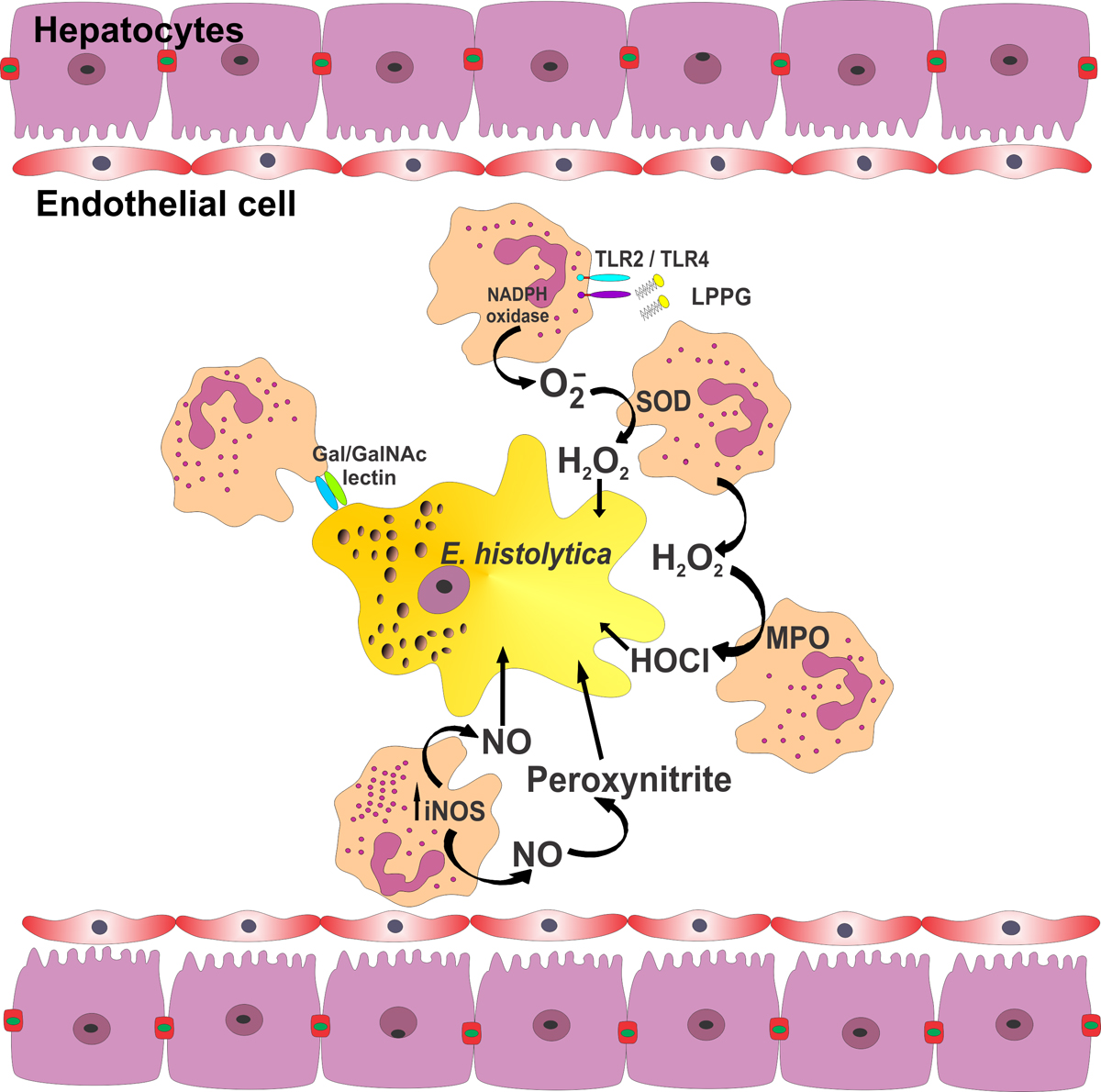Figure 1.

Download original image
The initial contact between the lectin and neutrophil receptors promotes CR3 expression by neutrophils, and then the interaction of this molecule with iC3b induces neutrophil degranulation. It is likely that neutrophils are activated due to the recognition by TLR-2 and TLR-4 of lipopeptidophosphoglycan (LPPG) from E. histolytica. Activated neutrophils undergo an “oxidative burst” that results in an increased production of superoxide (O2−) by the NADPH-oxidase system. Superoxide dismutase (SOD) rapidly converts O2− to hydrogen peroxide (H2O2, a highly oxidizing agent), and to the substrate of MPO for the formation of hypochlorous acid (HOCl). During this oxidative burst, neutrophils express high levels of iNOS, causing an increase in •NO. Another powerful oxidant is peroxynitrite, formed by the reaction of •NO and O2•−.
Current usage metrics show cumulative count of Article Views (full-text article views including HTML views, PDF and ePub downloads, according to the available data) and Abstracts Views on Vision4Press platform.
Data correspond to usage on the plateform after 2015. The current usage metrics is available 48-96 hours after online publication and is updated daily on week days.
Initial download of the metrics may take a while.


